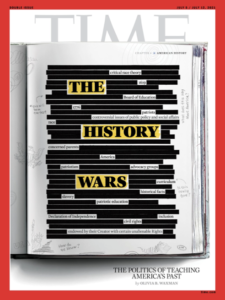America’s latest culture battle is the weaponization of Critical Race Theory. Any government program that works to address racial equity should be prepared for resistance and lawsuits. The core question facing the Biden-Harris administration is how to include race as a factor in federal procurement that can also pass muster in the Supreme Court.
 Race and racism highly impact HIV care and prevention programs. The fight against critical race theory is a fight the HIV community cannot ignore. According to Education Week, “Critical race theory is an academic concept that is more than 40 years old. The core idea is that racism is a social construct, and that it is not merely the product of individual bias or prejudice, but also something embedded in legal systems and policies.”
Race and racism highly impact HIV care and prevention programs. The fight against critical race theory is a fight the HIV community cannot ignore. According to Education Week, “Critical race theory is an academic concept that is more than 40 years old. The core idea is that racism is a social construct, and that it is not merely the product of individual bias or prejudice, but also something embedded in legal systems and policies.”
HIV results document that racism is more than an individual’s bias. Why are the majority of people living with HIV also people of color? Why are 75% of people on PrEP White? There is something systemic that creates this differential. People focus on the social determinants of health, but the outcomes almost always break down along lines of race. It is past time to directly speak to race and racism in America.
It will not be an easy fight. People are organizing across the country on both sides, and HIV needs to be part of the solution. If not, we will continue to see racial disparities in HIV that is mirrored in too many other diseases and social challenges impacted by race. The HIV movement can set the example for how America responses to race and ends an epidemic. Ultimately, the fight about using race in federal procurement will go to the Supreme Court where we will most likely lose given the court’s current make-up. Our job is to make it as difficult as possible for the courts to find against us.
What can the federal government do to include race as a factor in HIV federal procurement and not get stuck in endless court battles?
- Race can be a factor but not the only factor
- Look at education models like the one used at the Harvard Law Review
- Use Minority AIDS Initiative as a “test case”
NMAC believes that race can be a factor in federal procurement, but not the only factor. Our shared goal is to build the justification for using race that can also hold up in the courts. Affirmative action case law is the primary source of legal jurisdiction. So far, the courts have clearly said that race can be a factor, but not the only factor for affirmative action programs in universities. By the same token, race can be a factor in federal procurement, but not the only factor.
The selection process for the Harvard Law Review is a potential model for how a diversity of awards can be created. At the Harvard Law Review, 18 of the 48 editors are selected through a holistic but anonymous review that may consider race, disability status, gender identity, sexual orientation, and socioeconomic status. Maybe part of HIV contracting can also speak to the value of diversity in HIV grantees.
Given the weaponization of Critical Race Theory, the federal government might consider a pilot project that solidifies the value of “diversity” when using race as a factor in federal procurement. NMAC believes the Minority AIDS Initiative (MAI) is the ideal test case. The MAI was created to support minority-led organizations; however, the Bush administration had concerns about any type of affirmative action in federal grant making, so they changed the MAI from minority-led to minority-serving organizations. Given the Biden-Harris administration’s commitment to racial equity across government, now is the time to review implementation of this critical HIV funding stream.
 NMAC is asking Harold Phillips, the new Director at the White House Office of National AIDS Policy to pull together a working group of federal and community leaders to examine ways to use race when making funding decisions about the use of the MAI. It will be essential to include legal experts who can help minimize challenges that will inevitably follow.
NMAC is asking Harold Phillips, the new Director at the White House Office of National AIDS Policy to pull together a working group of federal and community leaders to examine ways to use race when making funding decisions about the use of the MAI. It will be essential to include legal experts who can help minimize challenges that will inevitably follow.
NMAC does not want to take any funding away from existing MAI grantees. Given the deadlines to end HIV, our hope is that the federal review is truncated to impact FY22-23 funding. Everyone wants to end the HIV epidemic but we will not reach this audacious goal if we continue with the status quo. HIV has led the way on so many issues. Now it’s time to lead with race.
| God is Love and Love is for Everyone,
Paul Kawata |

